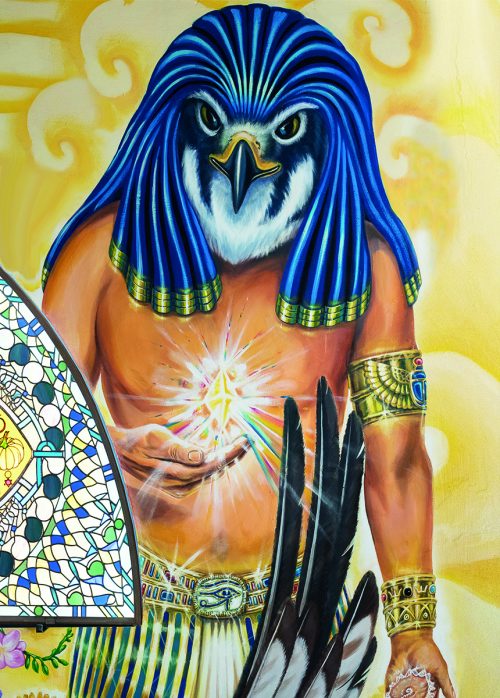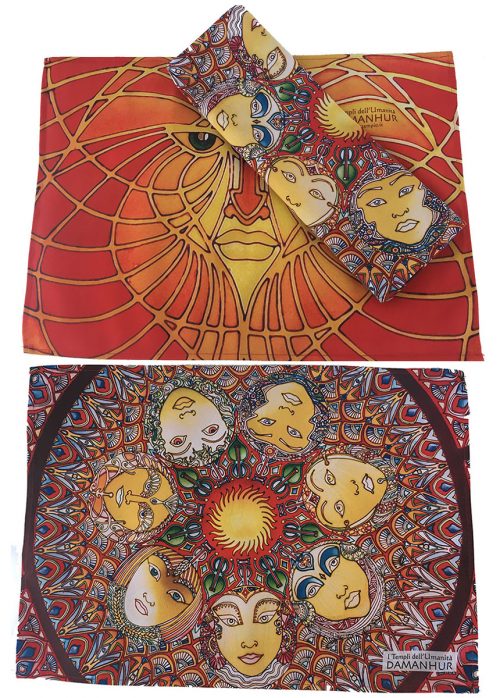DESIGN:
- ISIS is one of the most venerated figures in the Egyptian mythology. She is the goddess of fertility, motherhood and magic. Her maternal spirit is invoked in the healing process. She is often associated with the throne, that is, with the power of the pharaoh, of whom she is considered the celestial mother. She is the one who reassembles the body of her husband, Osiris, who was hilled and dismembered by his brother Seth. Thanks to Isis, Osiris comes back to life and because he has experienced and overcome death, he is acknowledged as the lord of the underworld, while Isis acquires the function of helper in the passage of humans tot the afterlife.
- HORUS is one of the most important Divinities in the mythology of ancient Egypt. He is the son of Isis and Osiris and is worshiped in two forms, that of the child Horus and that of the adult Horus. He is the very embodiment of the pharaoh and his power: absolute, wise, driven by deep love for the people over whom he reigns and for which he is responsible. His being so well-rounded is what strikes us most: he is son and father of a People, god and pharaoh, divine and human. All this is blended inside him without any separation and in total coherence, as a statement that everything that exists can be composed in a single, harmonious picture.
- LUNAR IMAGE: The image reproduces the central part of the Moon Door in the Hall of the Earth, in the Temples of Humankind. It shows the mediumistic intuitive expression on a female face enclosed between two half-moons.
- SOLAR IMAGE: Here we admire the central part of the Sun Door in the hall of the Earth, which shows the richness of the various aspects related to the Sun, represented here with an anthropomorphic image: a warrior whose helmet extends from the forehead to protect his nose.
- QUAN YIN: beloved Chinese goddess, mother of mercy, compassion and healing. She listens to the laments of the world and frees us from suffering: she is credited with the ability to heal both the body and the spirit. In the cultures where she is revered, there is a widespread belief that saying her name has the magical effect of helping sufferers receive comfort.
- RAMA: he is beautiful, courageous, wise, always in control. He carries with him the archetype of goodness and brotherly love. Probably, he was a real-life leder who became a hero and was subsequently considered a God. He is the most virtuous figure in Hindu mythology and his behavior, his thoughts, his coherence towards his choices, remind all human beings of the value of Dharma, the right behavior. Her represents an ideal that every man can aspire to fulfill, a divinity we can all expect to get close to: he seems to remind us, in fact, that the divine characteristics are within the reach of human beings. Rama, with his skin of the color of the moon and his smile, gives us the confidence that we humans can make his courage and wisdom our own.







